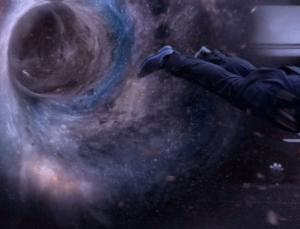Black holes are the single most interesting and puzzling objects in our Universe – that we know of. But as if they weren’t mysterious enough, researchers have found that if you apply a quantum theory of gravity to these bizarre objects, the all-crushing singularity at their core disappears, opening a whole new Universe of possibilities – literally.
What we know so far

“When you reach the singularity in general relativity, physics just stops, the equations break down,” says Abhay Ashtekar of Pennsylvania State University.
But this isn’t a problem limited strictly to black holes – the big bang, the one birth of our universe is thought to have also started out with a singularity – a singularity which again, breaks the limits of general relativity.
Adding a little quantum physics
As if things weren’t strange enough already, researchers started to add quantum physics in the mix: in 2006, Ashtekar and colleagues applied loop quantum gravity (LQG) to the birth of the universe.
LQG combines general relativity with quantum mechanics and defines space-time as a web of indivisible chunks of about 10-35 metres in size. What they found was absolutely stunning: as they went back in time in an LQG Universe, they reached the big bang, but no singularity – instead, something even more curious happened: they crossed a “quantum bridge” (politically correct term for a wormhole) into another older universe, basically confirming the Big Bounce Universe theory.
The Big Bounce is a hypothetical scientific model that claims all Universal start and end is cyclic – every Big Bang is the result of the collapse of a previous Universe.
Again, this happened in 2006, and now, Jorge Pullin at Louisiana State University and Rodolfo Gambini at the University of the Republic in Montevideo, Uruguay, have applied LQG on a much smaller scale: to an individual black hole – results were, again, stunning.
Wormholes and quantum physics

So there is a mathematical theory which suggests that if you go on one end of a black hole, you will end up in another part of the Universe, or in another Universe alltogether. While other theories, not to mention some works of science fiction, have suggested this – now it’s real business. But here’s the kicker:
It is now believed that black holes are also supposed to evaporate over time. As they soak up matter and information over a long period of time, if the information ends up in another Universe, then from our point of view, the information would be gone forever – practically destroyed – and that defies quantum theory itself!
But researchers suggest that if the black hole has no singularity, then the information needn’t be lost – it may just tunnel its way through to another universe – and we have to take that into consideration as well.
“Information doesn’t disappear, it leaks out,” says Pullin.
Sometimes, it just feels that life would be much simpler without quantum physics.
Journal Reference: Loop Quantization of the Schwarzschild Black Hole






